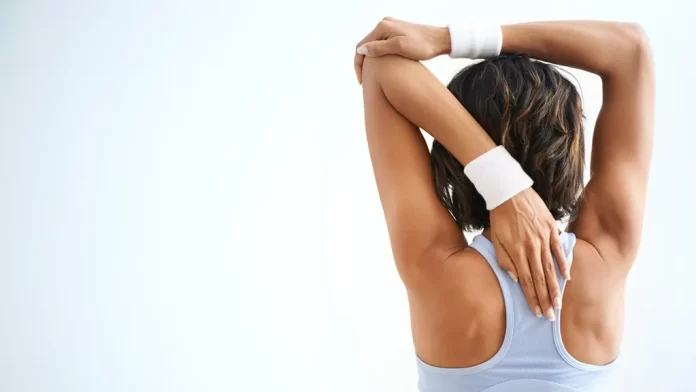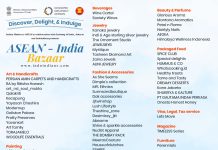Sitting in a cramped airplane seat for long periods can indeed lead to reduced circulation and fluid retention, resulting in swelling in the feet, ankles, and lower legs. This condition is commonly known as edema.
When we sit for extended periods, especially with limited legroom and restricted movement, it hampers the natural circulation of blood and lymphatic fluid in our bodies. This can cause fluid to accumulate in the lower extremities, leading to swelling and discomfort.
Stretching during a flight can offer several benefits to your body and overall well-being. Here are seven airplane stretches that you can try during your next flight to promote circulation, reduce muscle tension, and enhance comfort:
1. Seated Figure Four Stretch
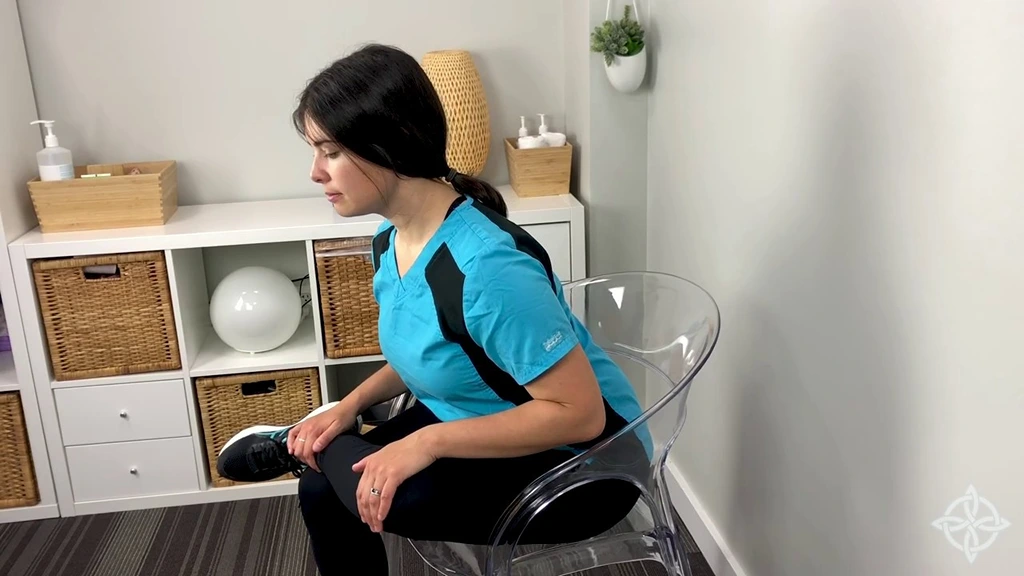 ACTIVITY: Stretching
ACTIVITY: Stretching
REGION: Lower Body
1. Sit up straight in your seat with both feet flat on the floor.
2. Lift your right foot and place the outer edge of your right ankle on top of your left thigh, just above the knee.
3. Gently press down on your right knee to increase the stretch in your right hip. You should feel a gentle pulling sensation on the outer hip.
4. Hold the stretch for about 20-30 seconds, while maintaining relaxed breathing.
5. Repeat the stretch on the other side by placing the outer edge of your left ankle on top of your right thigh.
6. Perform the stretch on both sides a few times, as desired, to relieve tightness in the outer hips.
This stretch targets the outer hip muscles, such as the gluteus medius and piriformis, which can become tight and contribute to discomfort when sitting for prolonged periods. By incorporating this stretch into your in-flight routine, you can help alleviate tension in the hips and increase circulation to the lower limbs.
2. Neck Stretch
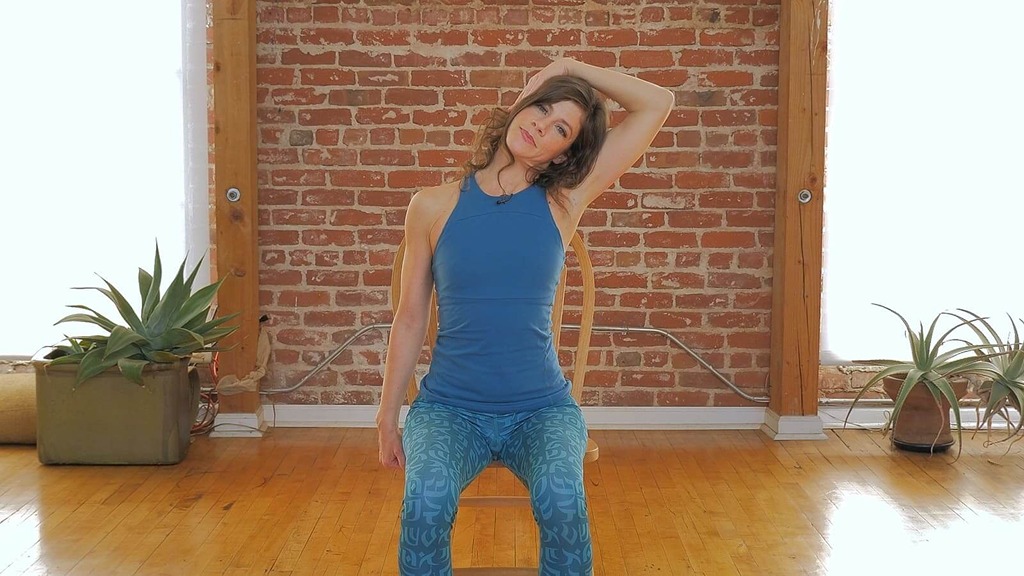
ACTIVITY: Stretching
REGION: Upper Body
1. Sit on a chair with your feet flat on the floor, knees bent at a 90-degree angle, and hands resting gently on your knees.
2. Raise your left arm up towards the ceiling so that your biceps are in line with your ear.
3. Bend your left elbow and rest your left hand gently on top of your right ear.
4. Gently press your left ear towards your left shoulder, feeling a stretch along the right side of your neck.
5. At the same time, extend your right fingertips down towards the floor at your right side to increase the stretch.
6. Hold the stretch for 5 to 10 breaths, focusing on relaxing and deepening the stretch with each exhale.
7. Repeat the stretch on the opposite side by raising your right arm and placing your right hand on top of your left ear, pressing your right ear towards your right shoulder, and extending your left fingertips towards the floor on your left side.
This stretch helps lengthen the muscles on the side of your neck, relieving tension and promoting relaxation. It’s beneficial for counteracting the strain that can accumulate in the neck and upper back during long periods of sitting.
3. Rounded Fold
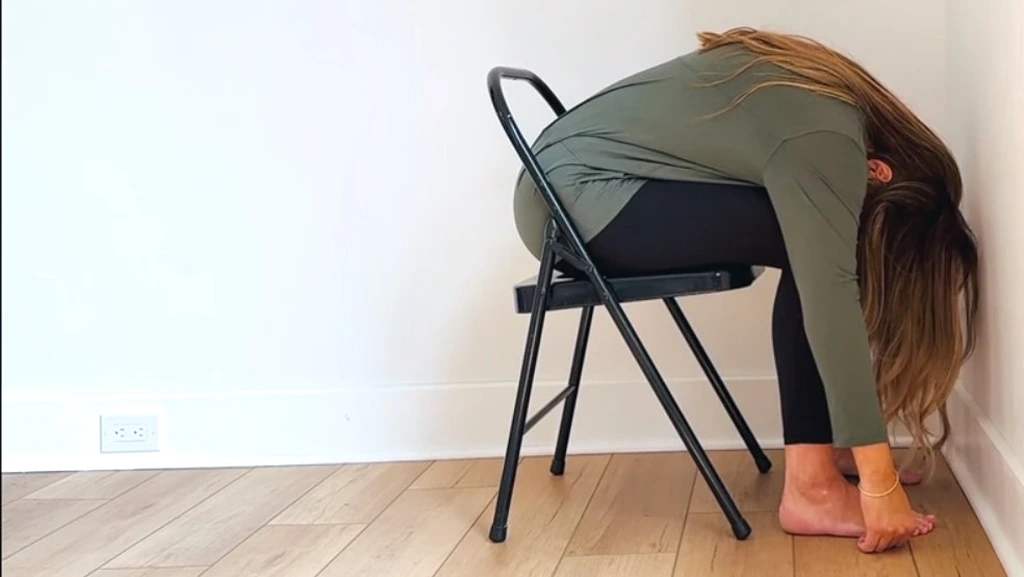
ACTIVITY: Stretching
REGION: Upper Body
1. Sit on a chair with your feet flat on the floor and knees bent at a 90-degree angle. Place your hands gently on your knees.
2. Take a deep breath in, lengthening your spine and sitting up tall.
3. As you exhale, hinge forward at your hips, rounding your spine and bringing your chest towards your thighs.
4. Lower your hands down towards your toes or as far as is comfortable for you.
5. Rock your head gently from side to side to release any tension in your neck.
6. Breathe deeply into any areas where you feel tension, allowing your breath to help release them.
7. Hold this position for 5 to 10 breaths, maintaining relaxed breathing throughout the stretch.
This stretch targets the entire spine, providing a release for tension and promoting relaxation. It’s a great way to counteract the effects of sitting in a confined space for an extended period.
4. Shoulder Stretch
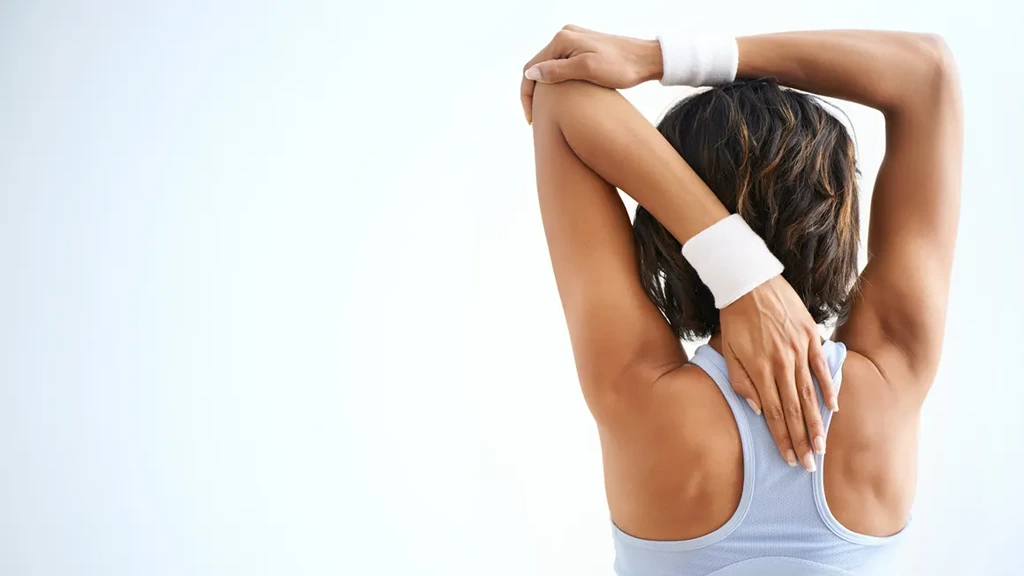
ACTIVITY: Stretching
REGION: Upper Body
1. Sit on a chair with your feet flat on the floor and knees bent at a 90-degree angle. Place your hands gently on your knees.
2. Raise your right arm up towards the ceiling, aligning your bicep with your ear.
3. Bend your right elbow and place your right hand gently on the back of your head, allowing your forearm to rest along the side of your head.
4. Raise your left arm up towards the ceiling, aligning your bicep with your ear.
5. Bend your left elbow and place your left hand gently on top of your right elbow.
6. Lean to the left side, keeping your head and neck aligned with your spine, and breathe into the stretch on the right side of your body.
7. Hold the stretch for 5 to 10 breaths, allowing yourself to relax and deepen the stretch with each exhale.
8. Repeat the stretch on the opposite side by switching the position of your arms and leaning towards the right side.
This stretch helps open up the shoulders, side of the body, and promotes increased oxygenation. It can be particularly beneficial after prolonged sitting when the shoulders and side muscles may feel tense and restricted.
5. Standing Forward Fold
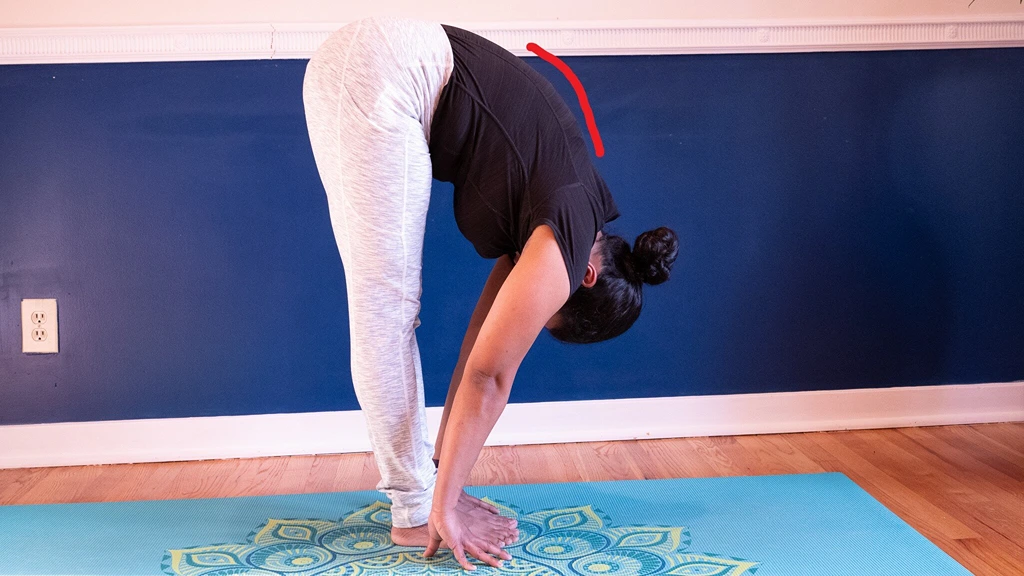 ACTIVITY: Stretching
ACTIVITY: Stretching
REGION: Upper Body
1. Stand with your feet hip-width apart and your arms hanging at your sides.
2. Begin by hinging forward at your hips, allowing your chest to come towards your thighs.
3. Lower your hands towards your ankles or as close to them as is comfortable for you. You can also let your hands hang freely or lightly hold onto your shins.
4. Shift your weight slightly forward towards your toes, which will increase the stretch along the backs of your legs.
5. Hold the position for 5 to 10 breaths, allowing yourself to relax and deepen the stretch with each exhale.
6. This stretch primarily targets the hamstrings and also stretches the lower back, calves, and glutes. It’s a great way to counteract the effects of prolonged sitting and promote flexibility in the lower body.
While performing the Standing Forward Fold, make sure to maintain a relaxed breathing pattern and listen to your body’s limits. Only go as far into the stretch as feels comfortable for you, and avoid any pain or discomfort.
6. Standing Heart Opener
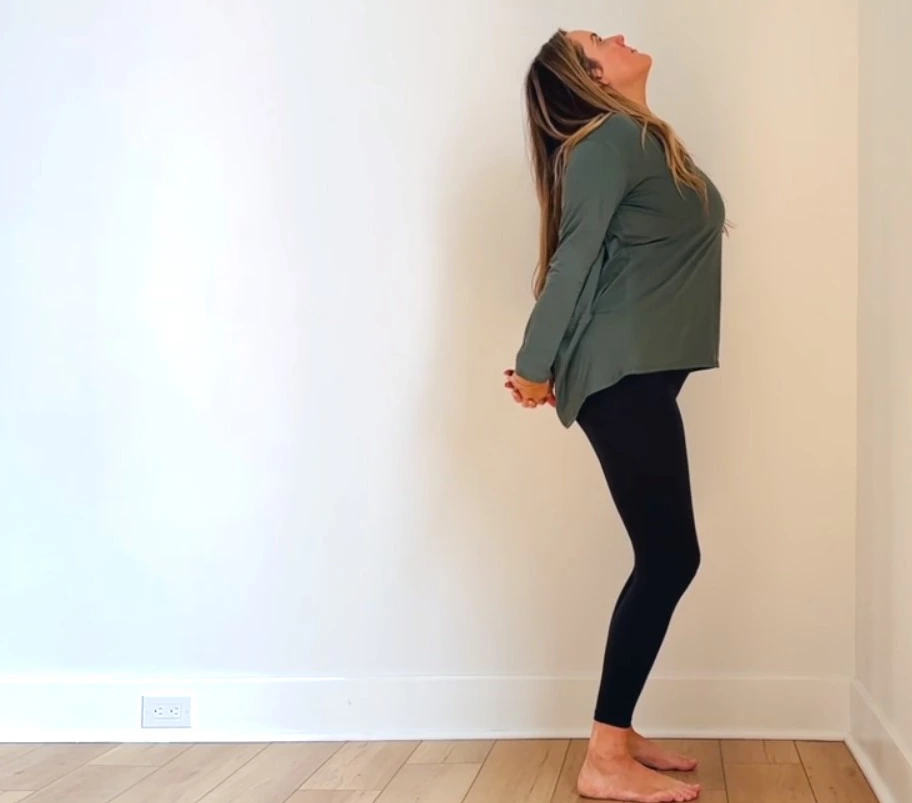
ACTIVITY: Stretching
REGION: Upper Body
- Stand with your feet hip-width apart and your arms hanging at your sides. Bend your knees slightly to find a comfortable stance.
- Extend your arms behind your back and clasp your hands together. If you’re unable to clasp your hands, you can use a strap or towel to hold onto.
- As you clasp your hands, gently draw your shoulder blades together, allowing your chest to open and expand.
- Keep your feet grounded and rooted while you stretch your knuckles downward toward the floor.
- Look up towards the ceiling, allowing your head to tilt slightly back, while keeping your neck and spine in a comfortable position.
- Hold this position for 5 to 10 breaths, maintaining relaxed breathing throughout the stretch.
The Standing Heart Opener stretch helps counteract the forward rounding of the shoulders that can occur during long periods of sitting. It promotes better posture, opens the chest, and can provide a refreshing sense of release.
7. Seated Spinal Twist
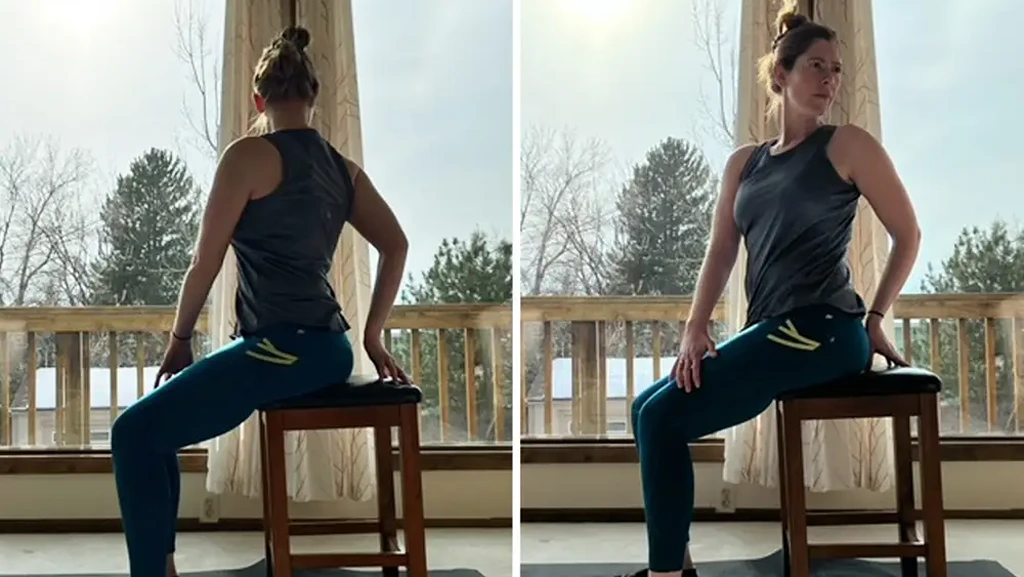
ACTIVITY: Stretching
REGION: Upper Body
1. Sit on a chair with your feet flat on the floor, knees bent at 90-degree angles, and hands resting gently on your knees.
2. Take a deep breath in, lengthening your spine and sitting up tall.
3. As you exhale, begin to rotate your spine to the right side, placing your left hand on the outside of your right knee and your right hand on the back of the chair for support.
4. Keep your hips square and try to maintain a straight and elongated spine.
5. Gently gaze over your right shoulder, deepening the twist.
6. With each inhale, find length and lift through the spine, and with each exhale, allow yourself to twist a bit deeper.
7. Hold the stretch for 5 to 10 breaths, focusing on maintaining relaxed breathing and deepening the twist gradually.
8. Repeat the stretch on the opposite side by rotating your spine to the left, placing your right hand on the outside of your left knee and your left hand on the back of the chair.
This seated stretch helps improve spinal mobility, releases tension in the side body, and supports digestion, which can be beneficial for relieving digestive discomfort during travel.

